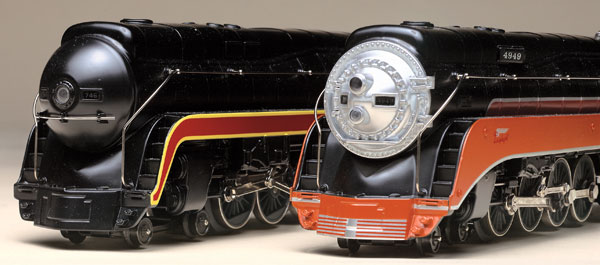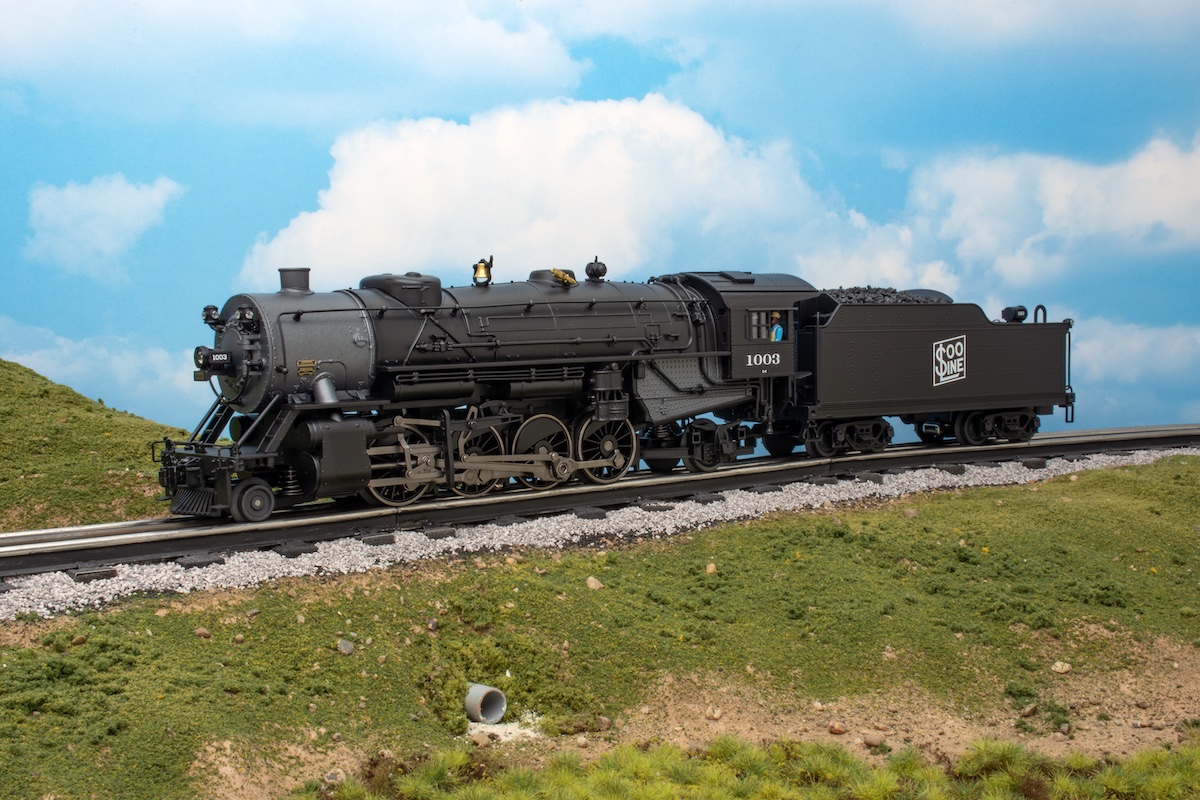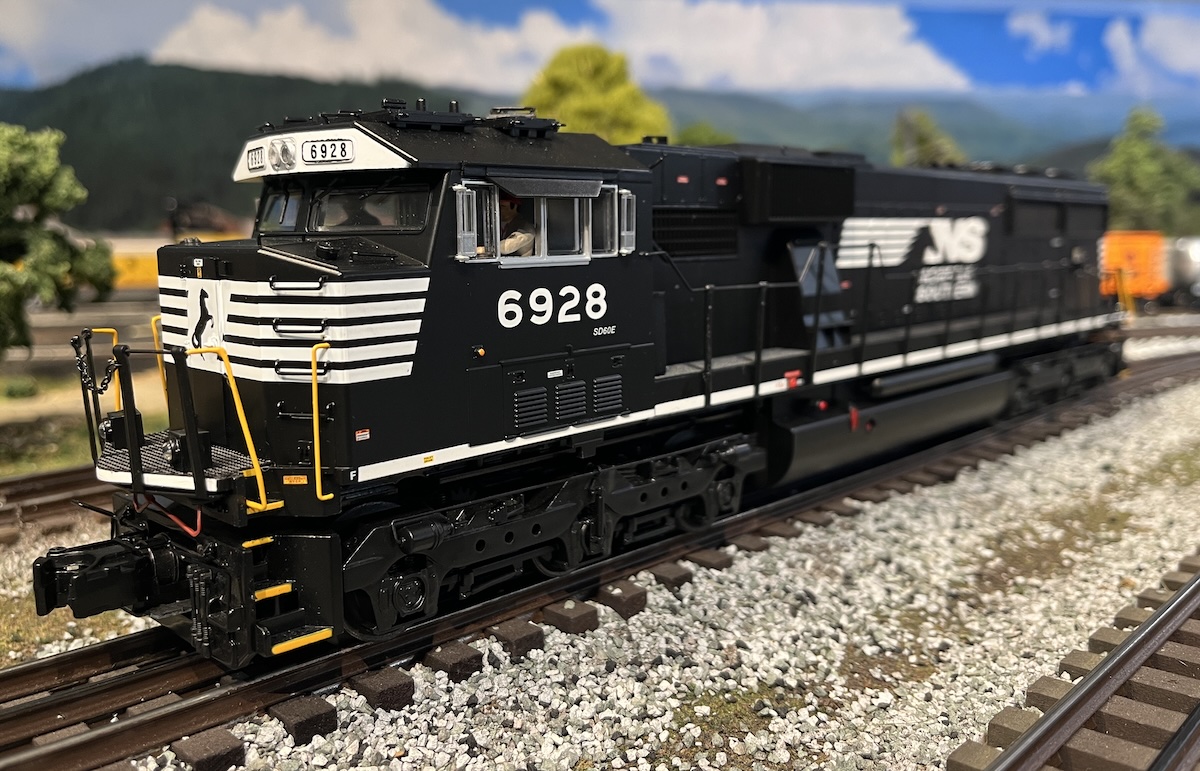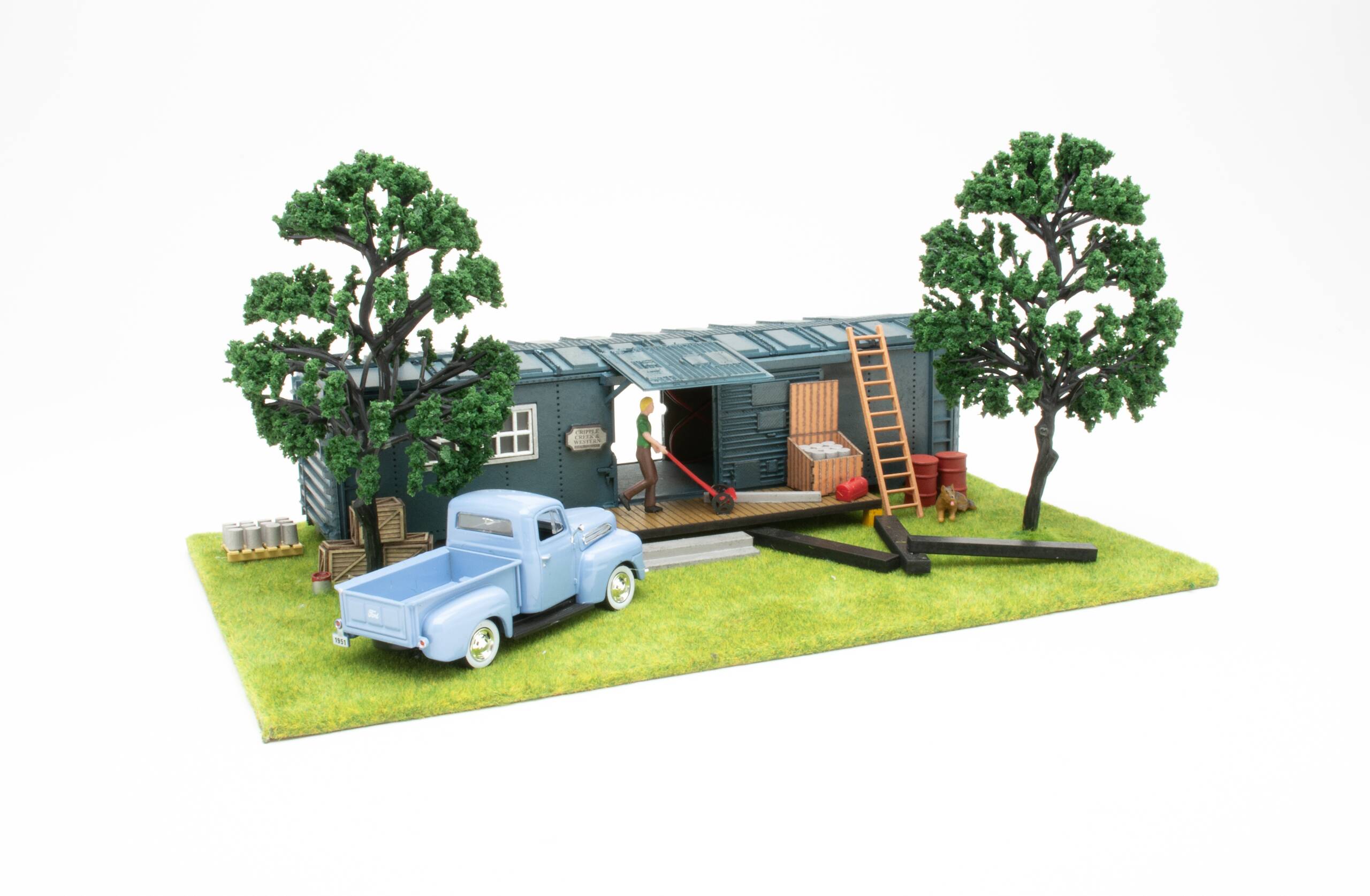Starting with a copy of the famed scale Hudson, Williams has produced steamers that look like postwar trains but benefit from today’s production techniques, maintenance-free motors, and reliable electronic reverse units. Cases in point are the Williams Norfolk & Western J-class 4-8-4 Northern and the Southern Pacific GS-class 4-8-4 in the famed orange and crimson Daylight colors.
Forget counting the rivets. These are models of Lionel’s models. Lionel’s original no. 746 “J” debuted in 1957. In the best Lionel tradition, it borrowed heavily from locomotives that preceded it, in this case Lionel’s postwar Berkshire (see page 75).
Lionel’s Daylight, in turn, was based on the no. 746. It first appeared in Lionel’s 1983 catalog as the no. 8307 GS-4. Although built 14 years after the postwar period ended, it retains a distinctive postwar flavor.
The models
The tooling for the Williams J and the GS-4 models is new, but they are copies of the Lionel models. How close are the copies? The Williams J has a small, unused square cut out beneath the cab. Look beneath Lionel’s 1996 “Warhorse” remake of its own J and you’ll see the identical opening filled by Lionel’s TMCC run/program slide switch.
Both Williams locomotives use the same shells with different noses. The GS-4 has a rough, angled, traditional nose but with twin headlights and illuminated number boards. The J has a rounded nose pierced by a single headlight, a handrail, and illuminated number boards.
Both boilers are streamlined, and the GS-4 has additional sheet-metal sheathing along the sides of the boiler above the drive wheels. A second pair of number boards is found midway down the GS-4’s boiler.
The undetailed cab interiors are reminiscent of early postwar steamers. The tops of the flywheel-equipped motors poke through an opening that matches the diameter of the boiler.
Painting and decoration of both locomotives are top notch. Of special note is the complex Daylight scheme.
Both tenders are plastic and are copies of the Lionel originals. The J’s tender carries coal, and the GS-4’s tender carries oil. Both contain Williams’ TrueBlast digital whistle, which, at one touch of the whistle button, emits the long-long-short-long blast used at grade crossings. There is also a bell sound.
Each locomotive and tender measures 22 inches from the nose to the rear coupler. The lengths are true to the Lionel models, but the locomotives and tenders are each short of scale length by about 3 inches.
On the test track
Not surprisingly, the performance of both Northerns was similar to Williams’ postwar-style Berkshire. Operation was smooth throughout all speed ranges, but when we took out our stopwatch we found that our sample locomotives weren’t identical twins.
The speeds of both engines were close to the 37 scale mph and 147 scale mph speeds of the Williams Berkshire we tested in December, 2001. Our low speed average for the GS-4 was 22.9 scale mph while the high-speed average was 137 scale mph. Running at 18 volts on the point of our 25-car mixed make and vintage freight, the GS-4 was clocked at 115 scale mph.
The J’s low speed average was 19.6 scale mph while the high-speed was 142 scale mph. When running at 18 volts, the J pulled our 25-car test freight at 112 scale mph.
There was a slight weight difference between locomotives. The J weighs 6 pounds, 13 ounces and has a drawbar pull of 1 pound, 6 ounces while the Daylight weighs 7 pounds, 1 ounce and has a drawbar pull of 1 pound, 8 ounces.
Both locomotives have traction tires and two pickup rollers for power, mounted roughly 5 inches apart. There are two additional rollers on the tenders for the whistle and bell. The whistle has a rich tone, but sound clarity isn’t up to the level of Lionel or MTH systems.
The Seuthe smoke unit doesn’t get too fired up below 12 volts of track power. It is neither fan- nor air-flap driven, so don’t expect it to fog up your train room. Both steamers have warning tags to only use Seuthe smoke fluid.
Based on our experience with Williams locomotives, these two steamers, and the new and very similar Williams 4-8-4 “Blue Goose,” will run reliably for years. These Williams 4-8-4s are terrific reminders of the simplicity of our hobby and assurance that you don’t need to spend a grand or be at home in a world of electronics to have fun with trains!














